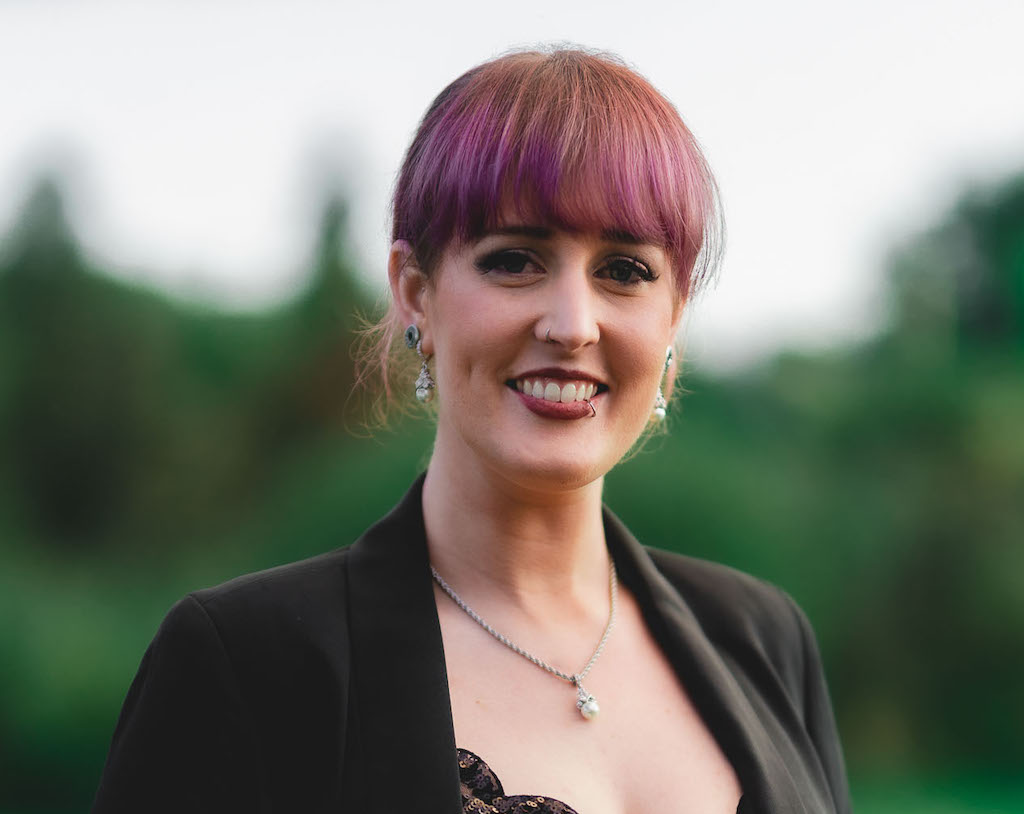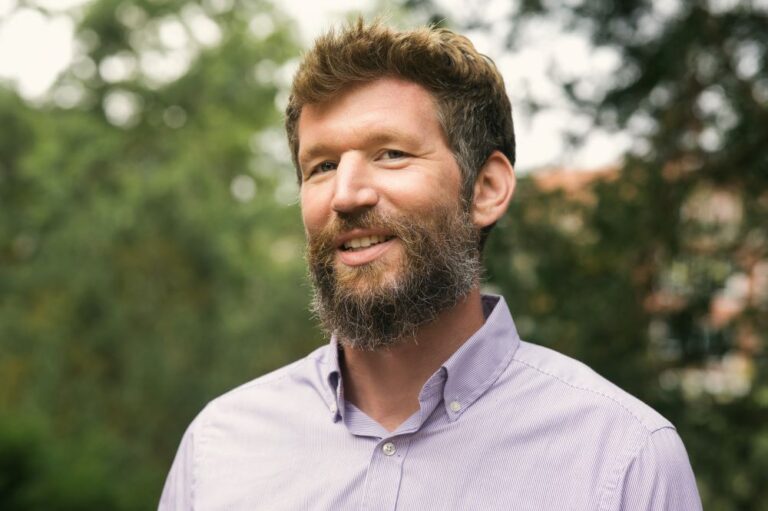
As the Inclusive Design Lead and the Mobile Design Lead for Accessibility at Wells Fargo DS4B, College of Arts & Letters alumna Shell Little is responsible for the company’s commercial digital attributes that deal with mobile leveraging properties.
“I work for the corporate side, so if your company banks with Wells, you use my software,” she said. “I do anything from creating the standards, to creating the product, to showing our designs, to writing accessible specks. A big focus of my role is asking how we can push the standards further because, as it stands, they are not enough.”
These accessibility standards were the focus of Little’s keynote address at the 2019 Accessible Learning Conference (ALC) held at MSU’s Kellogg Hotel and Conference Center November 21-22.
“The standards that we abide by are not quite there yet when it comes to cognitive accessibility,” Little said. “They are working on that, but it is very difficult to make standards, so we are asking ourselves how we can take what is present and fill in the gaps; that is where inclusive design comes in.”
Little was hired by Wells Fargo in 2016, three weeks after graduating from Michigan State University with a B.A. in Experience Architecture.
In her position, she can be working on six to 12 projects at any given time with every day being different.
I think disability rights are civil rights, and when we give disabled people access to technology, we give them power.
“It is all very project- and timeline-based, so my days depend on where a project is at in its timeline,” Little said. “I am currently working on a project that stretches through the year, while at the same time, working on one that needs a harder push.”
Currently, Little is working on the Biometrics Accessibility Remediation project, which she says she is really proud of.
“We are expanding the biometrics that you can use to log in to your mobile app as we leverage iOS and Android-based properties within the phone,” Little said. “We are implementing aspects like thumbprints and face IDs and, within Wells, we have our own internal eye scanner that was made more accessible. That was a really great project, and we did spectacular work.”
From the biometrics project, Little says she has learned more about what mobile means and how to create better experiences for users.
“That is something I speak about often,” she said. “It is all about finding the balance between teams who are working in different departments while making it a smooth experience for users. By improving user experience, we are improving accessibility in a lot of ways.”

For Little, the importance of digital accessibility resides in equity.
“I think disability rights are civil rights, and when we give disabled people access to technology, we give them power,” she said. “For me, as a person with a disability, we cannot exclude people, especially marginalized communities. If I do not do my job well, I stand between somebody and employment because they cannot do their job if they do not have the necessary accessible features.”
Statistically speaking, Little says that only 18 percent of Americans with disabilities have a job, and she wants to create accessible digital properties that include more people.
“By creating these properties, we are inviting people to the table who were originally left out,” she said. “These are people’s livelihoods, and their ability to study and learn in a technology-based society is crucial. Allowing disabled people to now be part of the conversation is life-changing for them. Being left out of something you have no control over is horrible, and that is a big reason why what we do is so important.”
Accessible Learning Conference Keynote Speaker
MSU’s Accessible Learning Conference provides attendees with a range of sessions exploring universally accessible courses, websites, and content. The focus is to help students, faculty, and community members come together to address the importance of accessibility in education.
“I feel really good about being selected to be the keynote speaker,” Little said. “I am really thankful that I was able to do this. I met so many wonderful people, and this was my first time keynoting, so it was great that I got to do it back at MSU.”
During her senior year at MSU, Little spoke at the Accessible Learning Conference, which she says helped her advance herself.
“It was my first time applying for a conference, and I did horribly. My presentation was actually rejected, and I had to email back begging to give me another try because I knew what I was doing was important,” Little said. “I spoke in a tiny cupboard of a room, and maybe five people attended. Fast forward to this year, and I got to be the keynote speaker. Now when I spoke, 500-some people attended, so when I think back to my first time, I am very grateful and appreciative of the opportunity that I got as a student to present.”
Those types of things are accessibility for people whose brains work differently than the societal standard of what is normal. I hope that we start to have more conversations about cognitive barriers.
The goal of Little’s keynote presentation, Accessible Products: It Takes a Village, was to highlight the two-fold nature of accessibility products.
“I wanted to focus on asking if the product was designed accessibly and if it was coded accessibly,” she said. “In my role at Wells Fargo, I cannot answer the latter. I have no power because I am not the one coding, so all I can do is make sure it is designed accessibility. As an industry and field, when we only focus on code, we absolutely leave out cognitive accessibility, and the biggest barriers that people like me face in cognitive spaces are from purposeful design decisions. I spent my presentation time discussing design patterns and how people with cognitive disabilities do not fit in the tight little pretty boxes that we so often put people in for accessibility.”
Little’s keynote presentation prompted the audience to think about things that are traditionally taken for granted.
“A lot of times, usability is actually accessibility for cognitive,” Little said. “When you think of things that are nice to have, they can be a deal-breaker for someone with a cognitive disability. Think of being able to paste into a form field. For somebody with dyslexia, not having the paste function can be a barrier, yet we don’t think about it. Those types of things are accessibility for people whose brains work differently than the societal standard of what is normal. I hope that we start to have more conversations about cognitive barriers.”

Along with her keynote presentation, Little also held a two-hour workshop for Experience Architecture (XA) students who are interested in accessibility work.
“The goal was to make the students aware of what the accessibility field looks like, what jobs look like, and what the climate is because right now, people are hiring,” Little said. “I wanted to expose students to the standards and talk about design principles. My hope is that students will think more about how important accessibility is for everybody because there is a misunderstanding that it is merely a coding issue, but everyone needs to be responsible.”
MSU Education Highlighted by Internships
While at MSU, Little says she fell into the XA major by chance.
“I started out in Professional Writing, and I was told by all of my professors that I was in the wrong program and that I needed to be in XA,” she said. “I challenged that notion because I thought I wanted to be in writing and work on the technical side of things while developing websites, but my professors still urged me to switch.”
During her time at MSU, Little worked as a Web Accessibility Intern for MSU IT.
You have to keep failing and keep learning from those mistakes until you know not to make them again.
“If a college wanted to purchase a product, my role at MSU IT was to do very rapid accessibility reviews to make sure everything was accessible for students, faculty, and staff,” Little said. “I worked really hard on that team and ended up helping with hires. That role prepared me for my future career and was one reason I was hired so quickly after graduation.”
Aside from interning with MSU IT, Little also held six other internships, all of which she says helped solidify different skillsets that aided her in her current career. When it comes to her MSU education, she says her internships were the best part about the XA program as they gave her room to fail.
“The XA program pushes you hard, and they understand that learning about things and the theory behind them is important, but you know nothing until you go out there and actually do it and fail,” she said. “You have to keep failing and keep learning from those mistakes until you know not to make them again. By doing as many internships as I did, I was allowed to fail in a very safe space. I urge students to fail as much as they can in college and learn and embrace it because that is the time to do so.”
Along with gaining experience through internships, Little encourages students who want to get into the field of digital accessibility to use the resources available to them.
“I am only where I am at because I was given opportunities in the form of internships. For students who do not have accessibility experience, I suggest they soak up everything they can on the Internet,” she said. “There are amazing resources, like TED Talks and books that cover accessibility content. Trying to get a job in the field with no experience is not the best tactic, but marketing yourself as a designer who is comfortable with accessibility principles makes students incredibly good candidates. It shows the industry that the next generation cares about accessibility, so it’s a win-win.”


